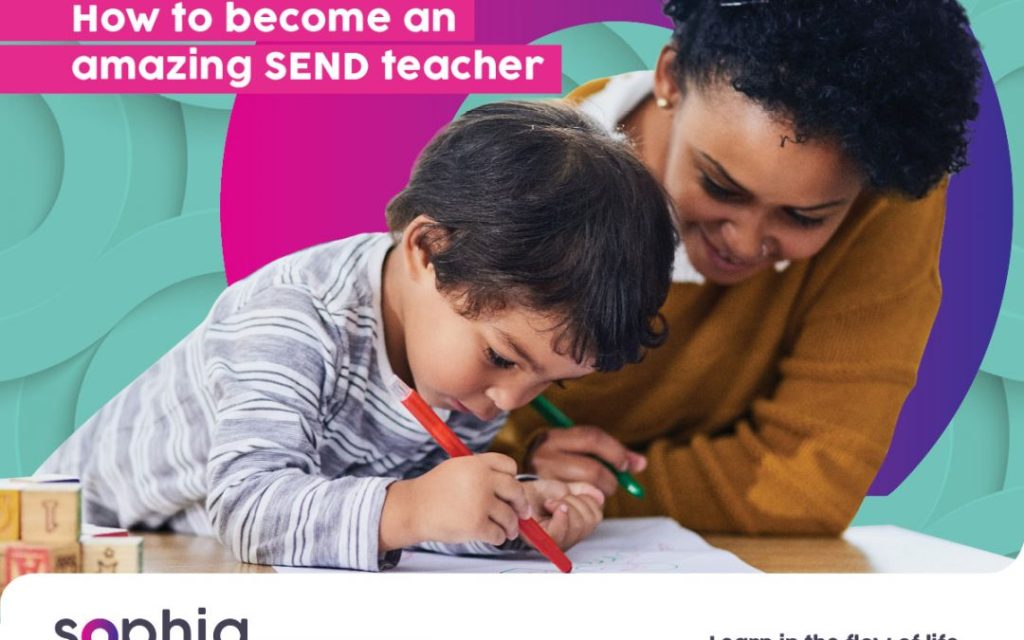
Special needs = special teaching skills / How to support learning impaired students /
Children with learning disabilities are falling behind, especially in developing countries. We explore ways teachers can support and include students with special needs.
In the past 30 to 40 years, the gap in education between children with learning disabilities, and those without, has increased dramatically – particularly in developing countries, according to a global study from the World Bank.
The stigma associated with disability plays a significant role in this disparity, resulting in discrimination and exclusion, but even more damaging is the shortage of teachers with the skills to nurture children with learning difficulties. A lack of understanding of both students’ and teachers’ needs, as well as inadequate facilities and learning resources, are undermining the futures of vulnerable students who need the most support.
Of the 19 countries surveyed in the World Bank report Disability Gaps in Educational Attainment and Literacy – including Burkina Faso, Ethiopia, Ghana, Kenya, Liberia, Mali, Malawi, Mozambique, South Africa, South Sudan and Zambia – primary school completion for children with disabilities was found to be just 48%, and only a third completed secondary school. Four in 10 children with disabilities cannot read or write, and as many as 3 in 10 have never been in school.*
A 2018 report on disability in the Arab Region found that the school attendance rate of children in Oman without disabilities aged 5-14 years (92.7 %) is 2,3 times higher than that of children with disabilities (40.3%)**
Finally, the World Bank report found that children with intellectual or multiple disabilities tend to fare worse than children with physical disabilities or disabilities related to hearing, seeing, or speech.*
“Ensuring that all children have the same opportunities to go to school and learn should be a top priority to end the persistent learning crisis,” said Quentin Wodon, World Bank lead economist and co-author of the study. “More than gender or socio-economic status, disability has an outsized impact on a child’s opportunities to learn.” *
Get SEND savvy
An acronym for Special Educational Needs and Disabilities, this refers to a broad range of conditions, from physical to intellectual to emotional, that may impede a student’s ability to learn.
The range of intellectual learning disabilities is broad. Causes include genetic factors and complications arising from illness or environmental impacts early in the child’s life, such as problems during pregnancy or birth, exposure to toxins such as alcohol, or malnutrition. Examples, which may overlap, include dyslexia, attention deficit/hyperactivity disorder (ADHD), dyscalculia (difficulty with math concepts), dysgraphia (difficulty writing), autistic spectrum disorders, Down syndrome, Fragile X syndrome, developmental delay, fetal alcohol spectrum disorder, non-verbal learning disabilities (difficulty interpreting non-verbal cues), oral/written comprehension disorder and specific reading comprehension deficit. Physical impairments and diagnosed mental health disorders (such as depression, anxiety and trauma) may also fall under the SEND banner.
6 ways to be an amazing SEND teacher
1. Get training
The most important step you can take to support your students with learning disabilities is to support yourself, first, by acquiring the necessary skills. E-learning gives you access to affordable, world-class SEND training in your own time, from anywhere in the world. Sophia for Schools’ ‘Inclusion’ course curriculum has been created by experienced specialist education experts, and covers the essentials of SEND, as well as related topics such as unconscious bias and adaptive teaching.
2. Create a profile for each student:
This is valuable for all students but particularly SEND students, allowing you to keep track of what keeps them motivated, their interests and individual needs, and any specialist recommendations.
3. Use a variety of teaching methods
Presenting information and insights in ways other than simply reading is helpful for SEND students, especially when it comes to abstract concepts. Be as visual and practical as possible (think mindmaps). Non-SEND students respond well to this, too, so it’s win-win.
4. Repeat key points
Highlighting important information or instructions can help to reinforce what may not have been absorbed the first time around. Recording lessons so that students can listen to them again afterwards may also be helpful.
5. Teach disability awareness
Teaching their classmates to understand and include SEND students can do wonders for SEND students’ self-esteem and, by extension, their motivation to learn. Plus, their classmates will benefit from learning how to embrace diversity.
6. Use the power of praise:
Praise SEND students liberally for effort (over achievement), and non-SEND students for inclusive, SEND-sensitive behaviours.
Sophia for Schools is a unified platform solution to your professional development needs that is fully customizable, feature rich and provides access to a wide network of support and region-relevant qualifications. Find out more at https://schools.mysophia.eu
SOURCES:
* https://www.worldbank.org/en/news/press-release/2017/12/01/children-with-disabilities-are-being-left-behind
**https://www.arabdevelopmentportal.com/sites/default/files/publication/951.disability-arab-region-2018-english_0.pdf